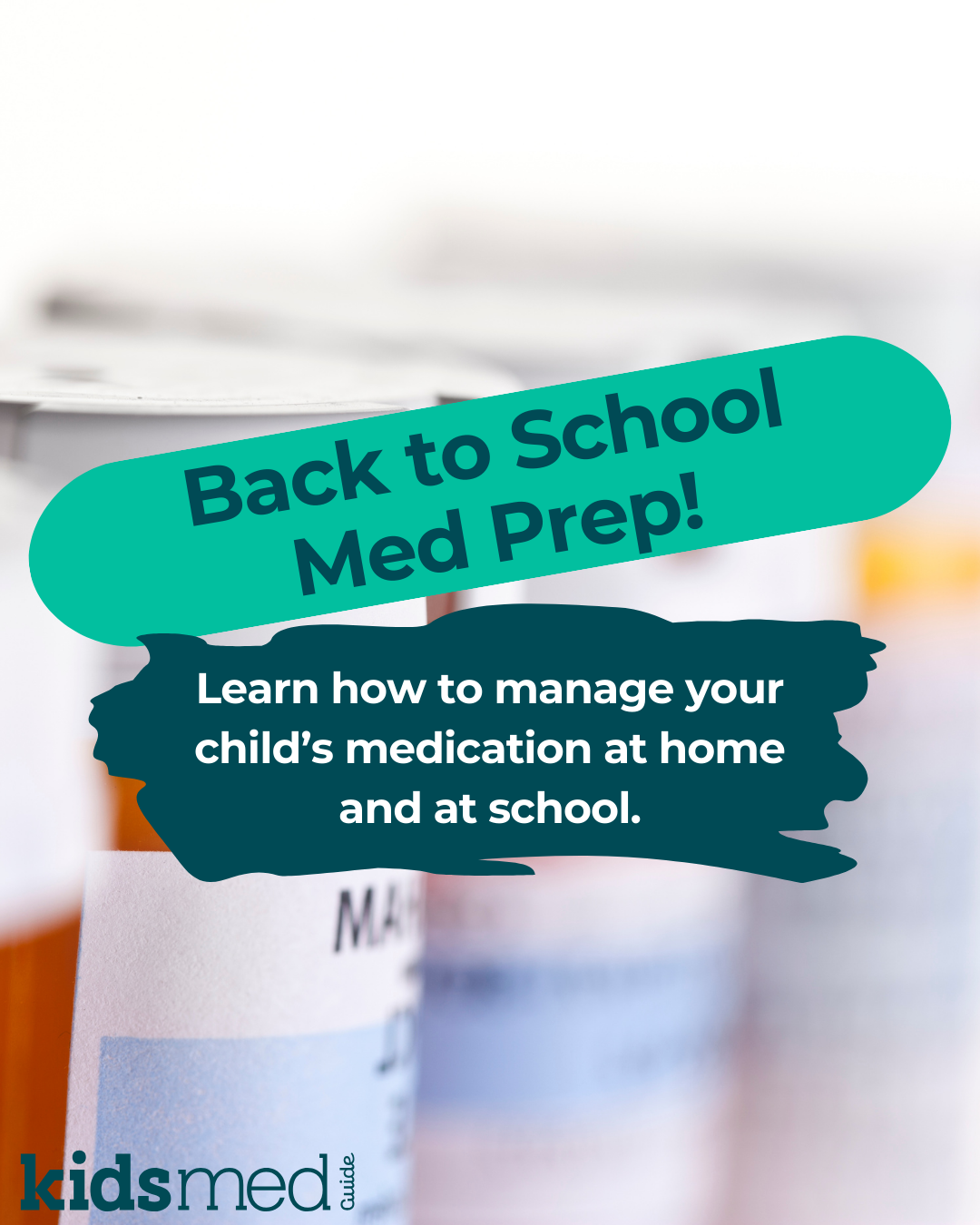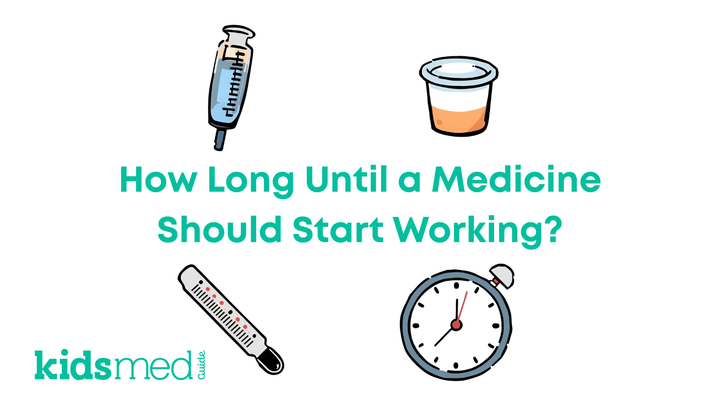Back-to-School Medication Preparation & School Nurse Coordination

As the school bell rings again (hooray!), parents are suddenly juggling lunchboxes, sports forms, permission slips, and backpacks... oh, and that yearly task of medication drop-off is added to the to-do list!
Back-to-school season can feel like juggling flaming torches blindfolded. We all get burned sometimes. In this blog, learn how to prepare for back-to-school when your child needs medicine during the day, and discover best practices for coordinating with the nurse or school staff.
Why Back‑to‑School Medication Preparation Is Important
Some chronic conditions, like asthma, ADHD, allergies, epilepsy, or diabetes, might require medication to be given to your child during the school day.
Thoughtful preparation helps prevent missed doses, emergencies, and confusion, and keeps your child healthy and in the classroom.
- Missing a dose of something like insulin, a seizure medicine, or an inhaler can send your child to the nurse’s office or cause a serious illness exacerbation that lands them at the doctor's office or in the hospital.
- Collaborating with the school nurse ensures that medications are managed safely and in accordance with legal requirements.
- The AAP emphasizes that well-coordinated medication administration promotes equity and consistent care for all students, as well as health and educational well-being.
- Parents are their children’s primary advocates and the best resource for coordinating between the prescriber, the pharmacy, and the school.

How Parents Can Prepare Medications Before School Starts
Create a checklist of medications
Write down everything your child takes, including daily scheduled medicine, PRN (as‑needed), and emergency meds like an EpiPen or glucagon. Include dosage, timing, and form (e.g., pill, inhaler). If necessary, collaborate with your healthcare provider to determine which medications must be administered during school hours.
Ensure prescriptions are up to date
Confirm that prescriptions are active, dosages are current, and there is enough supply for the school year. Need refills? Double-check those labels a few weeks before school starts!
Coordinate with your doctor and pharmacy to obtain a separate, appropriately labeled bottle of medicine specifically for school use.
Labeling and packaging medications safely
Bring medications in their original pharmacy-labeled containers, with the student's name, drug, dose, route, and timing clearly visible. Pack them in a secure yet accessible bag.
Important: an adult (parent or caregiver) must hand the medication directly to an adult staff member (nurse or representative) at the school. Kids lose things like it’s their job. Don’t rely on a child to deliver medication to school (many schools won’t even allow a child to bring medicine in).
Common challenges and how to avoid them
- Missed Doses: For important medications that cannot be missed, keep extra supplies at home or at school. If you forget a morning dose, you might be able to call the school nurse to give it there, saving you a trip.
- Unclear Instructions: Always keep medications in their original containers with clear instructions. For more complex regimens, such as insulin or PRN inhaler orders, communicate clearly with the nurse and consider creating an individualized health plan (IHP).
- Forgotten Refills: Verify with your pharmacy that your prescription is current and has enough refills.
- Emergency Access Delays: Ensure rescue medications are easily accessible in accordance with school policies. Children should be able to access their emergency inhaler or EpiPen quickly.
Medication Safety Guidelines for Schools
- Consider Storage – Medications, especially controlled substances, should be locked away, but emergency medications need quick access.
- Student Confidentiality – Policies must safeguard privacy; only the nurse or designated staff should handle medications.
- Handling Controlled Substances – Require a double-lock system and proper documentation.
- Allergy and Emergency Kits – Schools should have standing orders and easily accessible kits (e.g., epinephrine, albuterol).
Checklist for Parents Before the First Day of School
- Completed medication checklist with dosage and schedule
- Completed medication administration forms needed by the school
- Prescriptions filled with extras for school and home
- Medications in labeled, original containers
- Prescriber’s written orders and parental consent delivered to the nurse
- Emergency medication plan drafted and shared
- Scheduled a brief intro meeting with the school nurse
- Consider an individual health plan (IHP) for complex or chronic conditions
- If applicable, make sure your child’s asthma action plan is up to date and shared with the school
Preparing for the First Week of School
Schedule a brief meeting with the school nurse to review your child's medication plan, emergency procedures, and any necessary accommodations. Confirm where medications are stored, who administers them, and how communication will be handled.
Don’t be afraid to ask questions about the specifics and logistics!
If your school does not have a school nurse, confirm which authorized school representative will be responsible for storing and administering medication. Contact that person to share your plan and ask any questions you may have.

Frequently Asked Questions
What documents do parents need to provide for school medications?
This may vary by school and state law. Generally, provide a current written order from your child’s doctor and a signed parent/guardian consent form. If your child has an asthma action plan or similar individualized health plan (IHP), ensure the school has an up-to-date copy. Read more: Medication Forms for School
Can students carry their own inhalers or EpiPens?
Often yes, if policy permits. An Asthma or Allergy Action Plan formalizes this. Federal law encourages all students, including children, to have quick access to emergency medication.
How often should parents inform the nurse about changes in their child’s medication?
Promptly—especially after dose changes, new additions, or discontinuations.
What if a student misses a dose during school hours?
The nurse will follow policy by documenting it, informing parents, and monitoring for symptoms.
How do schools store controlled medications safely?
Controlled meds should be double-locked, logged, and tracked throughout the year. Controlled substance policies may vary by state, according to individual state laws.
Who can administer medication if the school nurse is unavailable?
This may differ by state or school district. If permitted, trained staff can administer medications under a nurse's supervision or in accordance with an approved protocol.
Takeaway
Between morning sandwiches and bus schedules (and the occasional rogue school spirit day), fitting in medication prep is another chore on the parents' to-do list. Plan for back-to-school medication needs early and coordinate with the nurse or school before the year begins. Stay healthy!
The following references were used to compile this information:
AAP Updates Guidance on Medication Administration in School. (2024, May 28). HealthyChildren.Org. https://www.healthychildren.org/English/news/Pages/AAP-updates-guidance-on-medication-administration-in-school.aspx
Managing Asthma at School. (2024, October 22). HealthyChildren.Org. https://www.healthychildren.org/English/health-issues/conditions/allergies-asthma/Pages/Asthma-Management-at-School.aspx
Miotto, M. B., Balchan, B., Combe, L., COUNCIL ON SCHOOL HEALTH, & NATIONAL ASSOCIATION OF SCHOOL NURSES. (2024). Safe Administration of Medication in School: Policy Statement. Pediatrics, 153(6), e2024066839. https://doi.org/10.1542/peds.2024-066839
When Your Child Needs to Take Medication at School. (2024, May 28). HealthyChildren.Org. https://www.healthychildren.org/English/safety-prevention/at-home/medication-safety/Pages/Administering-Medication-at-Child-Care-or-School.aspx



